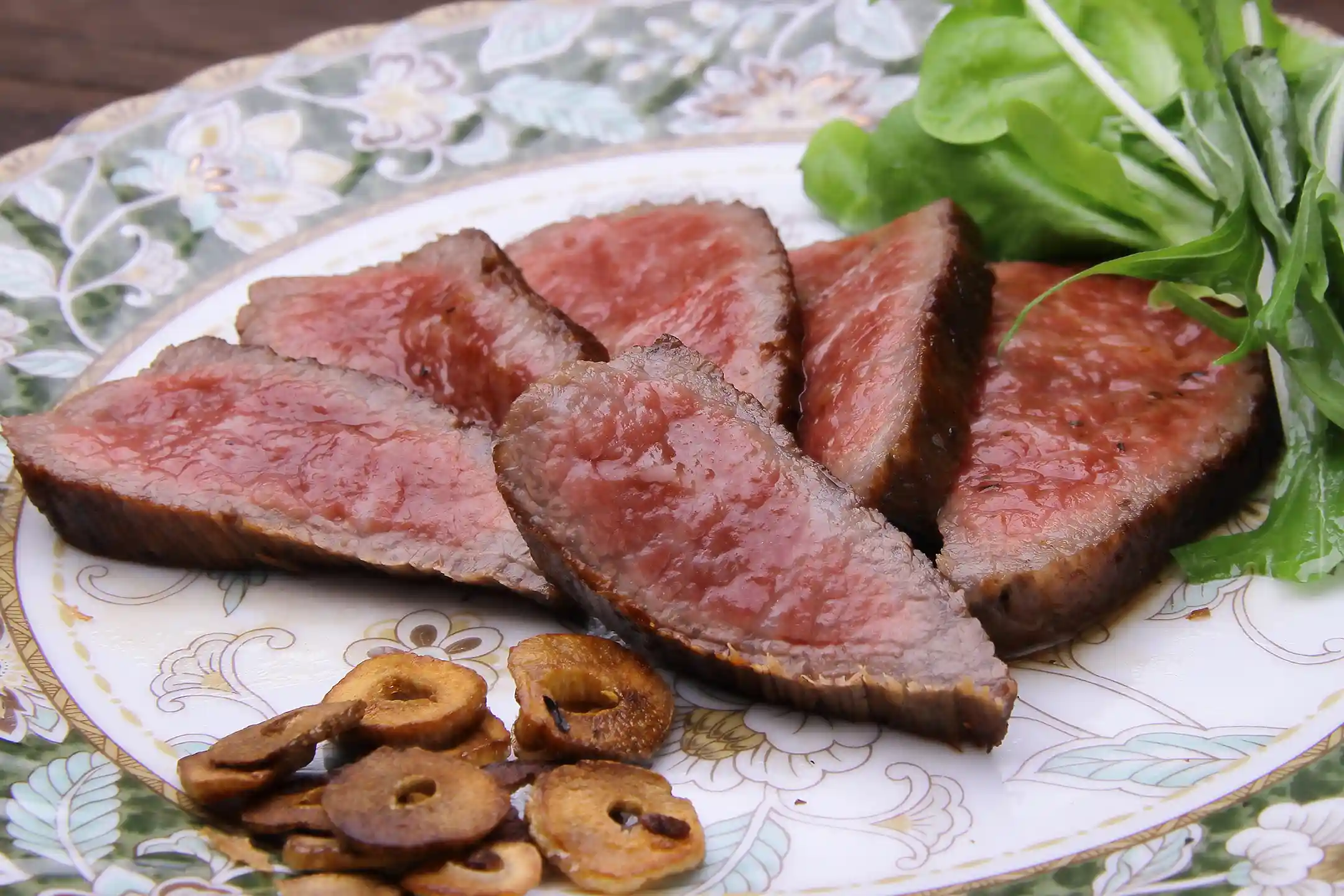For more than a thousand years, prayers have echoed through Japan’s sacred sites, offering an experience that feels distinctly different from Western pilgrimage customs or monastery visits. In many Western traditions, a pilgrimage often focuses on individual reflection and salvation. By contrast, the animistic beliefs woven into Japan’s history view nature itself—forests, mountains, and rivers—as home to deities and Buddhas alike.
Understanding these contrasting approaches can elevate your trip from simple sightseeing to a meaningful “dialogue of cultural exchange.” Here, you’ll explore various ways to experience Traditional and Religious Experiences in Japan: from a temple stay (shukubō) at Mount Koya and discovering kare-sansui (dry landscape) gardens in Kyoto, to visiting Ise Jingu (the Ise Grand Shrine) and admiring Buddhist art in Nara. Embraced by silent temples and shifting seasons, you’ll set off on an intellectual—and deeply serene—adventure in a culture that may feel new, yet timeless.
The Quintessential Japanese Traditional and Religious Experience: Purifying the Spirit at “Koyasan Shukubo”
Koyasan (Mount Koya) has been the sacred heart of Shingon Esoteric Buddhism since the monk Kobo Daishi Kukai founded it in 816. Inscribed in 2004 as part of the UNESCO World Heritage Site “Sacred Sites and Pilgrimage Routes in the Kii Mountain Range” (*1), Koyasan sits around 800 meters above sea level. This “religious city in the sky” features 117 temples, about 50 of which serve as shukubō (temple lodgings)—places where “the sacred and the everyday gently meet” (*2).
If you’re familiar with Western monastic retreats, you’ll note some parallels. Yet Shingon Esoteric Buddhism highlights a tangible bond between individuals and the universe through “mantras (shingon) and mandalas (visual forms).” Engaging with these teachings can help you move past “othering” or “Orientalism,” shifting instead toward “a willingness to understand one another.” That spirit of openness is your gateway into Japan’s Traditional and Religious Experiences.

Experiencing Spiritual Healing and Zen Aesthetics at Temple Lodgings
When you step into a tatami-floored room at a Koyasan temple lodging, you may be struck by how much it differs from a typical Western interior. The minimal décor—perhaps just a hanging scroll in the tokonoma (alcove)—creates a sense of calm through “subtraction.” By taking away visual clutter, you can let your mind rest.
Gazing out at a moss-covered garden, you might notice the edges between “nature” and “manmade” softly blur, giving the impression that you’re part of the landscape. Soft chanting of sutras and the gentle scent of incense draw you into the present, almost like a guided exercise in mindfulness. In the evening, you’ll savor plant-based shōjin ryōri (devotional cuisine), which offers an immediate lesson in sustainability and respect for life.
Later, you might kneel on a small shōgi stool, sipping matcha tea by lantern light. Here, flavor is just one part of the experience—there’s also the sensation of timelessness unfolding around you. This peaceful moment can serve as a digital detox, allowing you to re-center if life’s usual pace has left you feeling overwhelmed.
Sutra Copying and Zazen Under Monastic Guidance, Plus In-Depth Teachings on Esoteric Buddhism
At many lodgings, you can take part in sutra copying or zazen (sitting meditation). Sutra copying, for instance, might remind you of Western Christian prayer—but instead of conversing with a deity, you’re “becoming part of the text itself” through the act of writing. Meanwhile, zazen encourages you to observe thoughts come and go without clinging, echoing a “cultural relativism” that lets multiple ideas coexist without judgment (*3).
Listening to a monk discuss Koyasan’s history and Shingon Esoteric Buddhism’s worldview can move you beyond a single, fixed perspective. The vibrant colors of mandalas, the ritual flame of goma fire ceremonies, and the rhythmic chanting all become “embodied knowledge,” profoundly deepening your Traditional and Religious Experiences in Japan.
Sensing Zen Aesthetics in Kyoto: Kare-sansui Garden Tours and Authentic Tea Ceremony
Kyoto’s kare-sansui (dry landscape) Zen gardens and traditional tea ceremonies (chanoyu) highlight the Japanese notion of ma (the beauty of space or emptiness). Composed of stones, moss, and white gravel, these minimalistic gardens become mirrors reflecting your personal thoughts. They can spur a sense of intersectionality, as they unify diverse viewpoints into a single, contemplative experience.
On a related note, the tea ceremony—carried out in a humble chashitsu (tearoom)—shows that hospitality arises from “mutual respect,” a concept that can differ from Western service conventions. Rather than a top-down approach, you might see a more balanced dynamic rooted in warmth and thoughtfulness.
.webp?width=750&height=500&name=Ryoan-ji%20Temple_s%20Rock%20Garden%20(Karesansui).webp)
Discovering Japanese Cultural Aesthetics Through Zen Temple Gardens
Take Kyoto’s Ryoan-ji Temple, for example. Its famed rock garden is sometimes described as a “silent poem,” rendered through white gravel and stones instead of ink. Your perception shifts with every step, prompting you to accept multiple views at once rather than seeking a single, definitive “answer” (*1). In a world often obsessed with certainty, these gardens invite you to find beauty in the intangible.
Nearby, Kennin-ji Temple’s gardens mix moss, flowers, and stone walls, functioning almost as a “living sutra” in harmony with nature. Guided walks led by monks can reveal how these landscapes are more than ornamental—they’re spiritual texts, where you might glimpse the essence of Zen in each carefully chosen stone or plant.
Learning Spatial Design and Spiritual Culture Through the Tea Ceremony
Stepping into a tearoom, you’ll pass through a small nijiri-guchi entrance, gently bowing your head—a gesture of leaving behind social hierarchies so everyone becomes an equal guest. Even rotating your teacup slightly conveys “respect for the other,” resonating with feminist principles of care and equality (*2).
The tea ceremony’s ichigo ichie concept reminds you that every moment is fleeting—so you should treasure this instant with others. It stands in contrast to Western traditions that sometimes emphasize reproducibility, offering instead a lesson in “savoring the moment.”
Experiencing the Tradition and Spiritual Culture of Japanese Shinto at Ise Jingu

At Ise Jingu, towering cedar trees and pristine rivers illustrate the belief that “nature itself is divine,” reflecting Japan’s yaoyorozu no kami idea—that there are innumerable deities present in the natural world. While Western concepts often point to a transcendent Creator, Shinto embraces a vision of interconnectedness, echoing postcolonial ideas of “coexisting with multiple values” (*1). This perspective can greatly enrich your Traditional and Religious Experiences in Japan by broadening how you see spiritual diversity.
Exploring the History of Ise Jingu and the Significance of the Shikinen Sengu with a Specialist Guide
One remarkable aspect of Ise Jingu is the Shikinen Sengu rite, where key shrine buildings are rebuilt every 20 years. This process embodies a curious mix of continuity and renewal. With a knowledgeable guide, you’ll discover how tradition remains alive by being constantly re-created (*2). The skills and knowledge required for each reconstruction pass from generation to generation—an inspiring example of cultural sustainability.

Enjoying Traditional Crafts and Historic Cuisine Around Ise
The region’s local craftsmanship and cuisine add another dimension. Whether you’re admiring intricate Ise katagami stencils or savoring the distinctive broth of Ise udon, you’re witnessing a vibrant “regional identity” rather than something borrowed. Supporting locally grown and produced food also helps ensure you’re traveling responsibly, reinforcing traditions rather than exploiting them (*3). You can learn about pearl cultivation or hear local artisans’ personal stories—each insight takes you deeper into the cultural fabric that underpins Ise Jingu.
Deepening Understanding of Japanese Traditional Culture Through Buddhist Art and Historical Heritage in Nara
Nara’s temple-filled landscape functions like an “open-air museum” showcasing the 8th century’s flourishing Buddhist civilization, back when Nara was Japan’s capital. Gazing up at massive wooden buildings might remind you of the awe you feel before Gothic cathedrals in the West, yet the warmth of wood and lacquer offers a different emotional experience than stone. As experts often ask, “For whom was this religious art created?” That question draws you into a thoughtful comparison between your own culture and Japan’s (*1).
Exploring World Heritage Buddhist Art at Todai-ji, Kofuku-ji, and More
At Todai-ji, the monumental Great Buddha (Rushana Buddha) awaits, and at Kofuku-ji, the famed Ashura statue draws attention. Meeting their gaze can feel like an intimate exchange, crossing boundaries of time and identity. In queer theory terms, it’s a “beauty that dissolves traditional categories,” prompting you to reassess your own expectations and assumptions (*2)(*3).

Hands-On Workshop in Buddhist Sculpture: Immersing Yourself in a World of Traditional Craft
For a more tactile encounter, you might join a workshop where you carve wood with mallet and chisel. Through this act, “craftsmanship and prayer” become inseparable. In contrast to traditions that see a strict divide between “creator” and “creation,” Japan’s approach blurs that line, letting everyone feel closer to the Buddha through the making process. Taking home the small Buddha figure you create doesn’t just mean a new souvenir—it’s a personal, tangible artifact of your own exploration of religious art.
Eco-Friendly Travel Options to Sustain Japan’s Traditional and Religious Experiences
Visiting sacred sites can offer spiritual nourishment while also aligning with environmental awareness. Much like the rise of eco-tourism in the West, Japan encourages you to use EVs, trains, or buses, so that “the journey itself becomes part of the cultural experience” (*1). In places like Koyasan and Nara, walking the centuries-old paths immerses you more fully in the region’s history and atmosphere—one quiet step at a time.
Pilgrimage Using Electric Vehicles (EV) and Public Transportation
EVs run quietly, preserving the tranquility around temples and cutting down on CO₂ emissions. This initiative parallels European carbon-neutral efforts, so you can reflect on your role in shaping a more sustainable future. Riding a local train, meanwhile, lets you watch the changing seasons through the windows, turning your trip into a “moving observatory.”
Introducing Eco-Conscious Accommodations and Sustainability Initiatives
From eco-certified hotels in Kyoto and Nara to temple lodgings at Koyasan built with traditional methods, or farm-to-table resorts around Ise-Shima, Japan offers plenty of “comfortable but responsible” travel choices (*2)(*3). By highlighting local materials and renewable energy, these accommodations invite you to question old assumptions about “luxury” being linked to “excess.” They show how diversity and coexistence can define modern indulgence.
After all, each moment of your trip can shape local communities and the global environment. When you recognize your power to influence both, your journey becomes a lesson in cultural understanding on multiple levels.
In Closing

A shukubō stay at Koyasan, the kare-sansui gardens in Kyoto, Shinto practices at Ise Jingu, and the Buddhist art of Nara all provide touchpoints for physically experiencing Japan’s rich worldview. By taking part in activities like sutra copying, the tea ceremony, or even carving a Buddha statue, you transform textbook knowledge into something you genuinely feel. As you explore sustainable travel options and reflect on “diversity through mutual support,” you’ll see how local tradition, the environment, and your own perspective can harmonize.
In this more contemplative journey, you’re moving beyond routine tourism, discovering a “broader purpose” in travel. Whether it’s through the hush of a moonlit garden, the soft chanting in a temple hall, or the flavors of shōjin ryōri, Japanese spiritual culture invites you to step outside your comfort zone and gain fresh insights you might carry home forever. By truly soaking in these experiences, you’ll tap into a heritage that stands ready to be passed on, renewed with each visitor who engages with it—making your Traditional and Religious Experiences in Japan both meaningful and enduring.
Author Bio



%20at%20Koyasan%20A%20Sacred%20Splendor.webp)

.webp)
.webp)